
Book information in the form of book metadata is usually provided by publishers upon requesting for ISBN. Adding book metadata is essential for a number of reasons: it makes a book easy to categorize and find—for readers, librarians, and booksellers—and it’s a key element of a successful book marketing and sales strategy.
- What Is Book Metadata
- Book Metadata Standards
- Book Metadata Examples
- Book Metadata Database
- Book Weight in Metadata
What Is Book Metadata
Book metadata contains all the information about a new publication that will be included in various bibliographic (library and bookseller) databases. It is basically the info that gets added to the book listing and a recorded ISBN on Bowker. (In the U.S., ISBNs must be purchased from the Bowker MyIdentifiers program.)
If a book comes into publishing and it’s not supplied with metadata, it will neither be findable by readers nor will it sell. Good metadata saves a book from obscurity and helps it sell well.
Here is the most common information usually included in the metadata set:
- Title
- ISBN
- Author
- Book Media/Format
- Publication Status
- BISAC Codes (explain the book genre)
- Main Description or Brief Description
- Publication Date and/or On-Sale Date
- Sales Territory
- Page Count (for print and ebooks)
- Total Runtime (for audiobooks)
- Spine Size
- Book Weight
- Trim Size
Adding a few more fields will help a book sell even better:
- Table of Contents
- Excerpt
- Citations (professional reviews and endorsements)
- Keywords
- Title Relationships (comp titles, the author’s other books)
- Age & Grade Ranges
Book Metadata Standards
ONIX is the publishing industry standard for distributing metadata. The ONIX format is used to share metadata and create and update title information on the websites of booksellers.
According to Eloquence on Demand,
- “ONIX stands for ONline Information eXchange.
- ONIX is an XML-based standard created by a consortium of publishers, wholesalers, retailers, and data aggregators, originally brought together by the Association of American Publishers (AAP).
- The ONIX format was created in response to the industry’s need to be able to communicate better information about titles.”
In the U.S. publishing industry, the ONIX standard is maintained by the Book Industry Study Group (BISG), a membership-supported, not-for-profit research organization.
According to BISG, ONIX is “A standard form that publishers can use to distribute electronic information about their books to wholesale, e-tail and retail booksellers, other publishers, and anyone else involved in the sale of books. ONIX enables book information to be communicated between different organizations even if they have different technical infrastructures and business needs. It isn’t a database, but provides a standard XML template for organizing data storage.”
A typical ONIX usually contains the information about the book that we’ve mentioned earlier:
- Title
- Author
- ISBN
- Price
- Availability
- Blurb, reviews, and extracts
- BISAC Subject Codes
- Territorial rights
- Links to website and book cover images
- Etc.
Before ONIX, book metadata distribution was slightly chaotic. ONIX for Books was created to bridge the gap between publishers and booksellers. Its main goal is to make book information transfer easier in the situation of multiple data formats used by major industry database companies.
Here is a list of some organizations that use ONIX for Books in the U.S.:
- Amazon
- American Booksellers Association (ABA)
- Association of American Publishers (AAP)
- Association of American University Presses (AAUP)
- American Wholesale Booksellers Association
- Baker & Taylor
- Barnes & Noble
- Bowker
- Evangelical Christian Publishers Association (ECPA)
- Hachette Book Group
- Harcourt Trade Publishing
- HarperCollins Publishers
- Ingram Book Company
- Library of Congress
- McGraw-Hill Companies
- MUZE, Inc.
- Nielsen BookScan
- Penguin Group (USA)
- Rowman & Littlefield Publishing Group
- Simon and Schuster
How Is Book Metadata Distributed
Whether you are a self-publisher (1–10 ISBN purchases, 1–99 new titles a year), a small press ( 100–999 ISBN purchases, 100–499 new titles a year), or a medium and large press (more than 1,000 ISBN purchases, more than 500 new titles a year), you will encounter a request for “metadata” about your books.
So to tell Amazon or Bowker about a new book, you can manually put all the relevant info in an ONIX message and e-mail or send it through FTP. You’ll have to sweat a lot to do it right, though. Since ONIX is an XML-based standard, it has quite complicated syntax and rules, and the end file will look something like this:
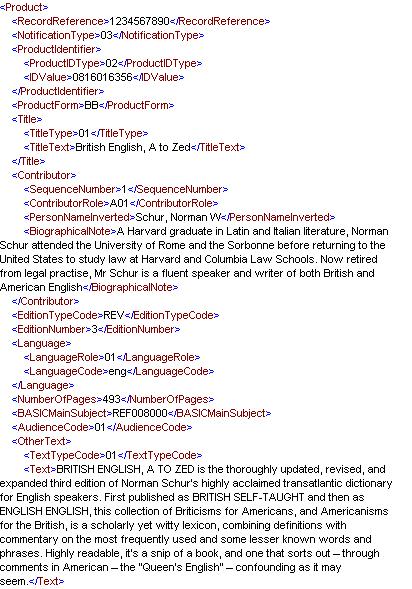
Source: Onixedit
Alternatively, you can use third-party tools to create and send ONIX files. For instance, Eloquence on Demand is a metadata service owned by Firebrand Technologies, which is broadly used by publishers in the U.S. It is a simple but powerful tool for book data creation, management, and distribution (500+ trading partners). So instead of inserting all the book information to an XML file manually (as in the example above), you’ll be dealing with a friendly and intuitive interface with checkboxes, dropdown menus, etc. You won’t be thinking about the ONIX XML file at all: it’ll be compiled and sent on your behalf by the service:
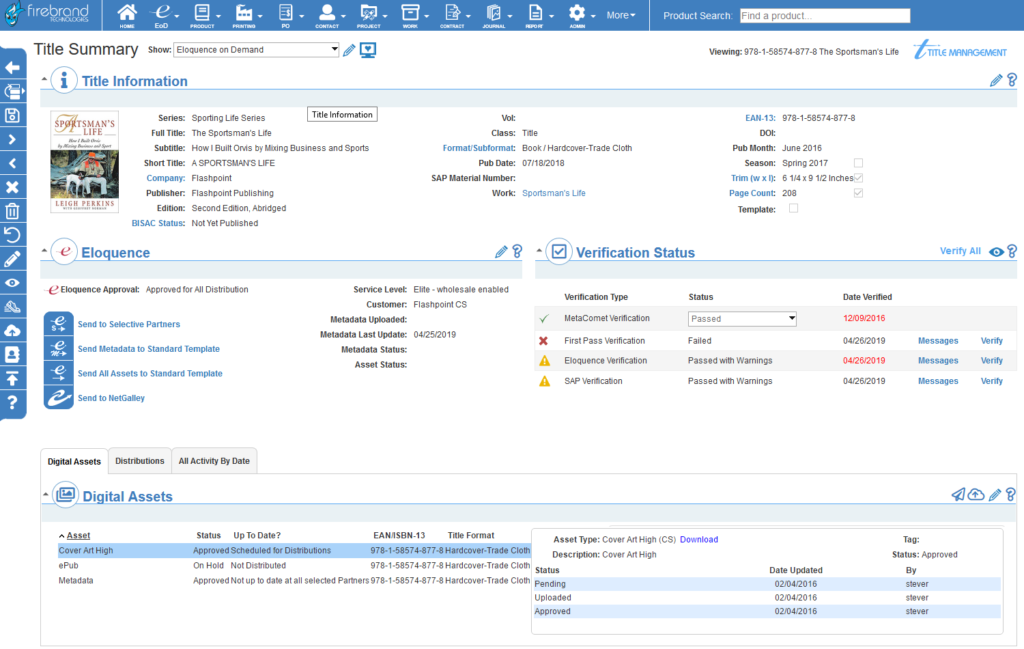
Here is another example from ONIXEDIT:

Remember that book metadata will be requested when you upload the files for print, apply for your ISBN, etc., and according to Bowker, “Whether you create your metadata feed yourself or use a third party to create ONIX, accuracy and completeness should be your goals.”
Book Metadata Examples
Here is the form from the Luminare Press publisher with all the metadata they request about a new title:
 Luminare Press Book Metadata Form
Luminare Press Book Metadata Form
Here are examples of how book metadata is displayed on bookseller websites:
Structural Steel Design (6th Edition) on Amazon:
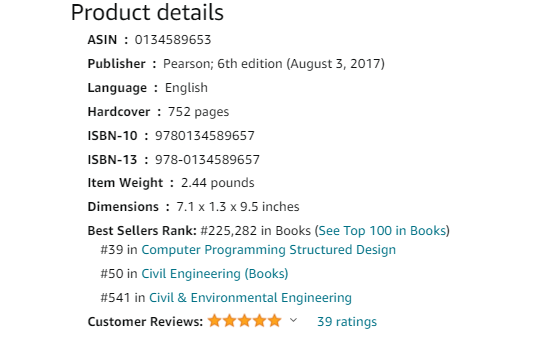
Structural Steel Design (6th Edition) on eBay:
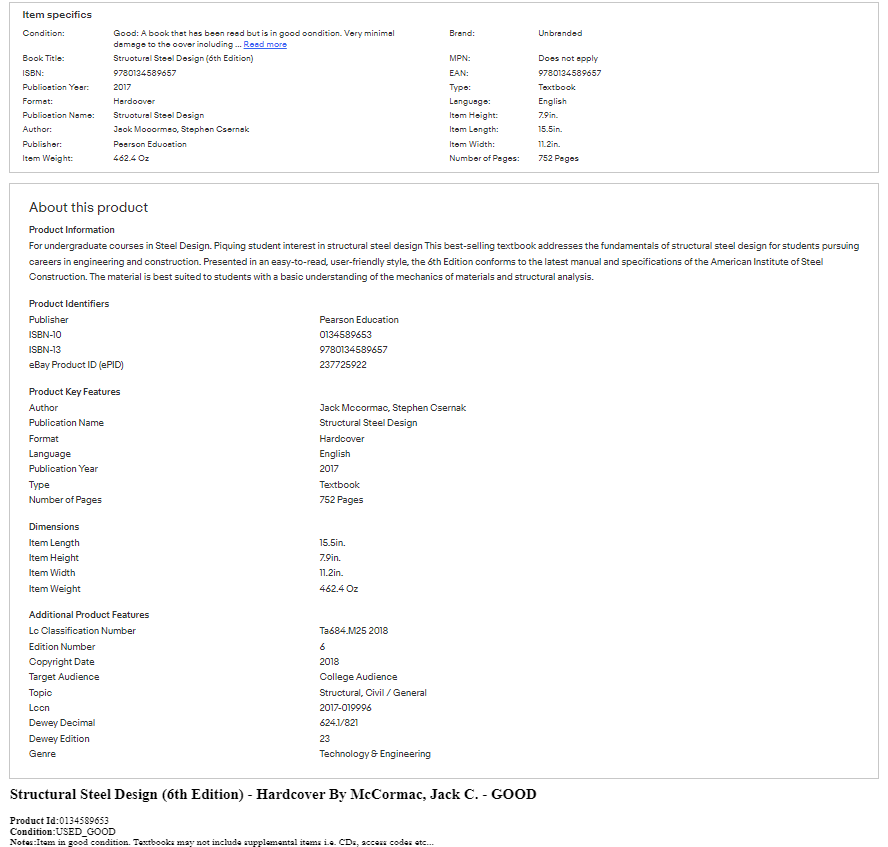
Structural Steel Design (6th Edition) on Alibris:
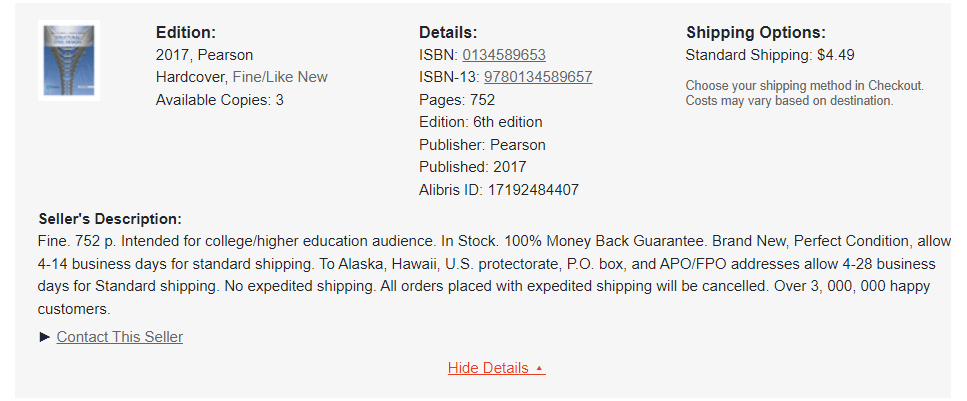
Talk To Me In Korean Level 1 on BooksRun:

Book Metadata Database
To list a book on the website, a bookseller has to possess the book metadata we’ve been writing about all along. It usually comes from one of the book databases. Most commonly, it’s either Bowker, Ingram, ISBNdb, Open Library, WorldCat, Amazon Books (for affiliate partners), Google Books, or some other (depending on the reseller in question, their size, and budget).
Here are several extensive databases you might have heard of:
Bowker
Bowker is the exclusive ISBN agency in the U.S. and Australia that aggregates all sorts of book-related data. We’ve mentioned it as an agency that appoints ISBNs for newly published books; however, it’s also the database booksellers can apply to get the book metadata they need.
ISBNdb
ISBNdb is another extensive database with book-related data. Founded in 2002, it contains more than 35 million book titles, with each title containing metadata with up to 19 data points (from ISBN10, ISBN13, title, author, publication date, publisher, etc. to Dewey decimal number, weight, and subject). The database is updated daily and is fairly expensive in terms of access.
Amazon Books
Amazon has an extensive book database and is willing to share this information with its affiliate partners (Amazon Associates Program). Program members can search books by ISBN as well as other variables (title, author, publication date, publisher, etc.) and get access to book metadata.
If you would like to learn more about book APIs and access further information, we recommend reading about the top book APIs.
Book Weight in Metadata
As you can see, there is plenty of information that comes into a book metadata file; however, book weight should be mentioned separately.
Book weight information is usually added to the ONIX file with other book information by publishers when they apply for an ISBN. However, books are often reprinted using different (heavier or lighter) paper (especially book covers) and even at different facilities. Yet they still with the same ISBNs, which may result in weight differences. These weight differences are never recorded anywhere in book metadata, which causes a lot of problems for booksellers.
Weight differences resurface at the point of selling a book and having to ship it. Booksellers and individual resellers (upon receiving buyback orders) have to re-weigh and re-check book weight information to ensure it corresponds to what’s been claimed for this or that ISBN.
Why we’ve devoted an entire section to book weight in metadata? There hasn’t been any information covering the subject regardless of the fact that the problem is common in the bookselling business, and, unfortunately, there is little to be done about it. While book weight itself is of little importance to a buyer (unless it impacts shipping fees), we wanted to highlight that weight differences related to reprinting are a pain for every bookseller. We hope that in the nearest future, the problem will be solved by means other than manual re-checking and re-weighing.
Final Thoughts
In this article, we wanted to shed some light on the topic of book metadata, how it is distributed, and where it can be retrieved. If you’d like to know more, you can also check our previous article on book databases.





